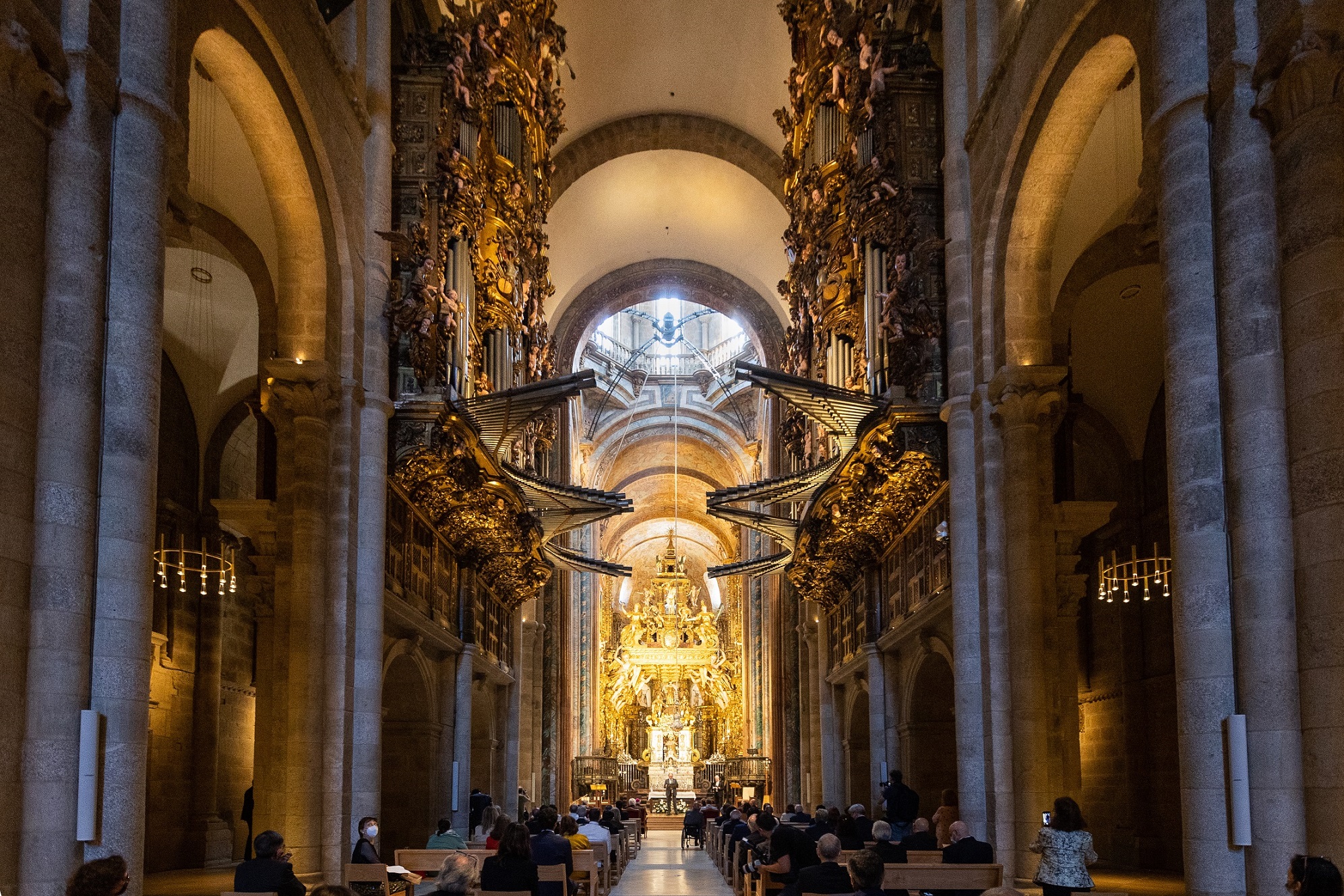Iberdrola committed to ecclesiastical heritage through its foundation in Spain
- The Company has illuminated more than thirty temples thanks to its ‘Illumination Program’ that improves the interior and/or exterior facilities
- The Foundation has invested more than three million euros in the work from which thirty churches have benefited since 2009
In recent years, Iberdrola has dedicated its experience and passion for lighting to enhance the beauty and splendor of prestigious Churches. From an imposing cathedral to a humble chapel or synagogue, his projects have transformed the way we experience light and shadow in these places of worship.
The main objective of the Fundacion Iberdrola España Illumination Program is to develop interventions in unique buildings to install or improve interior and/or exterior lighting to contribute to the enhancement of historical-artistic heritage.
The use of new LED technology characterizes this program, which represents a series of advantages such as improving conservation, increasing energy efficiency (75% more on average than analog bulbs), and reducing maintenance costs with a much longer useful life. In addition to the artistic, economic, and environmental benefits, we must add the potential of these lighting projects that promote economic activity, facilitating local development.
Since 2009, a total of 30 churches have been illuminated throughout Spain thanks to Iberdrola. These projects have involved an investment of more than three million euros, among which the following stand out:
In Castilla-La Mancha, nine lighting projects and more than 600,000 euros invested. The work on the interior of the Church of San Antonio Abad, the interior and exterior of the Mosque of Cristo de la Luz, and the Tower of the Church of Santo Tomé in Toledo stand out. In Cuenca, the façade of the impressive Uclés Monastery; in Ciudad Real the interior of the Church of Valdepeñas and Guadalajara, the Cathedral of Sigüenza.
Numerous actions have also been carried out in Castilla y León in recent years. Specifically, ten illuminations that reach almost a million euros in investment. In the province of Salamanca, most of them stand out, the Altarpiece of the Church of Campo de Peñaranda, the Altarpiece of the College of Archbishop Fonseca, the Altarpiece of the Old Cathedral of Salamanca, and the interior of the New Cathedral of Salamanca and Palencia. In addition to Salamanca, the interior lighting of the Basilica of San Juan de Baños the exterior lighting of the Church of San Hipólito in Palencia, and the exterior of the Ávila Cathedral stand out.
In the Community of Madrid, the illuminations of prestigious churches such as those of Valdemorillo, San Antonio de los Alemanes, the Basilica of the Royal Monastery of San Lorenzo de El Escorial, and the interior of the Church of the Monasterio del Paular stand out.
In the Basque Country, in 2015, the lighting of the Altarpiece of the Church of Juncal in Irún was carried out. Likewise, in the Valencian Community, the Chapel of the Holy Chalice of the Cathedral of Valencia was illuminated in 2017 and in Extremadura, in 2020, the exterior of the emblematic Monastery of Guadalupe, in Cáceres, was illuminated.
In Galicia, two recent illuminations have been carried out in highly prestigious churches. On the one hand, the interior lighting of the Church of the College of Monforte de Lemos in 2023, and the lighting of the Cathedral of Santiago de Compostela from 2019 to 2021, in which some 36 lamps suspended in the ceiling, inspired by its ancient votive lamps.
Finally, in La Rioja, in 2009-2010 the Yuso Monastery was illuminated, where, since 2012, the Iberdrola Spain Foundation has collaborated with the San Millán de la Cogolla Foundation to recover documentary collections from the library. of the Monastery. So far, thanks to the Iberdrola Spain Foundation, 52 highly valuable codices have been restored.
Atlantic Romanesque Plan
In addition to these ecclesiastical lighting projects, the Iberdrola Spain Foundation also carries out restoration projects for ecclesiastical heritage. This is the Atlantic Romanesque Plan, an initiative promoted by the Junta de Castilla y León, Fundación Iberdrola España, and the Ministry of Culture of Portugal that aims at cross-border cooperation for the conservation of cultural heritage. The Atlantic Romanesque Plan includes restoration and enhancement projects for around twenty Romanesque temples located in the Spanish provinces of Zamora and Salamanca and the Portuguese regions of Porto, Vila-Real, and Bragança.
Among the actions that have been carried out, the churches of San Martín de Tours and Santo Tomás (Forfoleda) in Salamanca, and the churches of San Pedro de la Nave, San Martín de Castañeda and the Ermita de Muga de Sayago in Zamora stand out.
Iberdrola, with the promotion of art and culture
One of the priority objectives of Fundación Iberdrola España is to promote culture, paying special attention to the care and maintenance of diversities, singularities, and cultural and artistic riches.
Thus, it carries out restoration, conservation, and illumination work on the historical-artistic heritage. The objective is to promote the recovery and conservation of our heritage through collaboration with the entities and institutions (both public and private) responsible for its management, to contribute to the creation of wealth and the development of the different regions. In addition, we pay special attention to the lighting of unique monuments.
We decisively contribute to the promotion and dissemination of art and culture in Spain, especially in those territories where Iberdrola is present, by supporting local cultural manifestations. To this end, we technically and financially support artistic and cultural activities carried out by relevant public or private institutions such as museums, theaters, foundations, or cultural associations.

